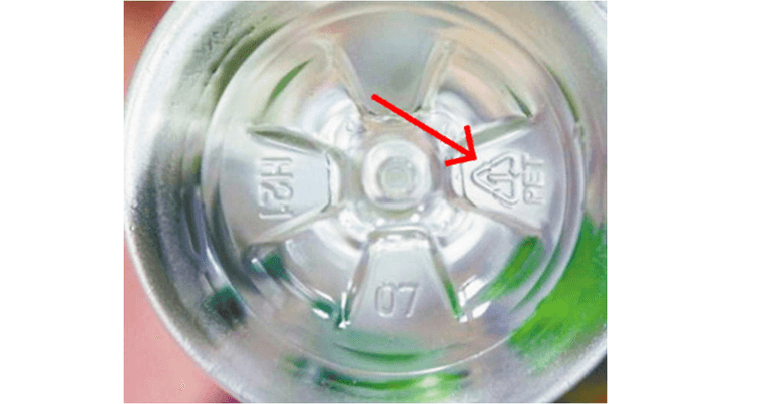Have you ever noticed the numbered triangles below the plastic bottles you use? Did you wonder what the number inside the triangle represents? They are known as recycling symbols, that carry significant information regarding the material of the plastic bottle.
We are all aware of the basic preaching of consumerism – consumers should be equipped with adequate knowledge and information that make way for the consumers to make the right purchase decisions. However, very few us take initiatives to learn in detail about the worthiness of the products we have been purchasing.
Hence today, HNBT would like to take the responsibility to reveal to you some of the most crucial information that you MUST know about the plastic materials that you have been using all your life.
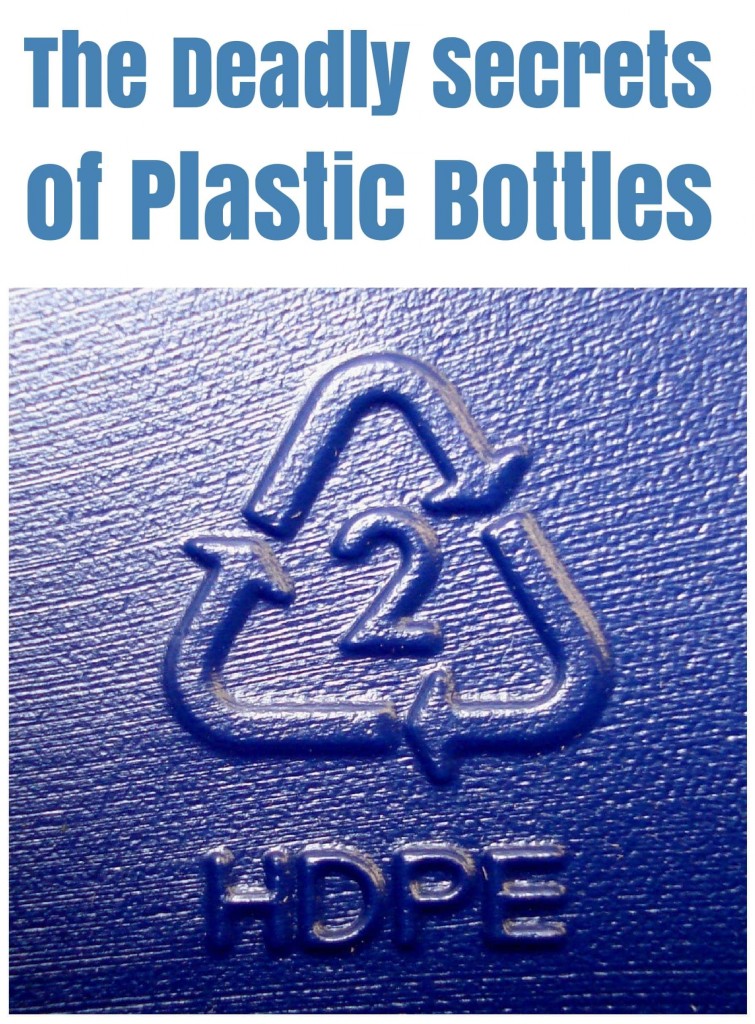
The Hidden Secret of Plastic Bottles – Symbols and Numbers Below Bottles
Every plastic container or bottle has a recycling symbol. The symbol is a number, ranging from 1 to 7, within a triangle. While these symbols may just appear as symbols to you, they can actually offer a great deal of information regarding the toxic chemicals used in the plastic material of the bottle, how likely the plastic is to leach, how un-bio-degradable the plastic is, and ultimately the safety of the plastic. Knowing the significance of the numbers is certainly crucial because they have direct impacts on your health as well as the environment.
Number 1 – Please don’t use the bottle after its expiry date.
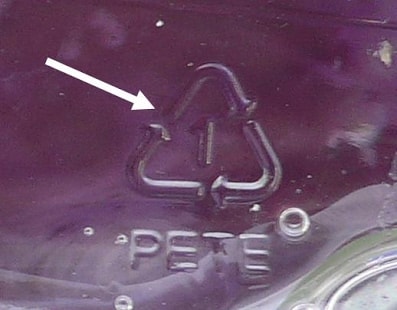
The Number 1 inside the triangle as shown in the picture above represents that the plastic is made of Polyethylene terephthalate (PETE or PET).
This plastic is safe for single use and should never be heated. Some consider it safe, but this plastic is known to allow bacteria and flavor to accumulate. If you observe carefully, there’ll be a message on the cover saying: CRUSH THE BOTTLE AFTER USE.
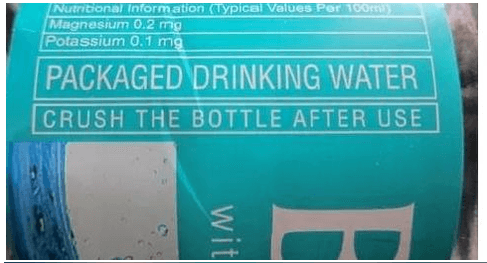
The plastic eventually disintegrates after the expiry date. Thus, drinking water from an expired bottle means that you are drinking not just the water alone, but also with minute amounts of plastic which is undoubtedly hazardous to your health.
Common Usage : The material is usually clear and is used to make soda, water bottles, beer bottles, salad dressing containers, mouthwash bottles, and peanut butter containers.
Recycling : Plastic #1 is recycled into tote bags, furniture, carpet, paneling, fiber, and polar fleece.
Also read: 6 Ultimate Reasons To Stop Drinking Bottled Water
Number 2 – These plastics can be reused and refilled.

Number 2 inside the triangle represents the container is made of High-Density Polyethylene (HDPE). This plastic is one of the 3 plastics that are considered to be safes, and has a lower risk of leaching.
Common Usage : Milk jugs, household cleaner containers, juice bottles, shampoo bottles, cereal box liners, detergent bottles, motor oil bottles, yogurt tubs, and butter tubs.
Recycling : Plastic #2 is recycled into pens, recycling containers, picnic tables, lumber, benches, fencing, and detergent bottles, to name a few.
Number 3 – Aavoid the usage of that plastic immediately.
If you see number 3 inside the triangle, dump that plastic immediately. Avoid using them at all. These plastics are made of V or PVC (Vinyl).
Effects : They contain DEHA or Diethylhydroxylamine which can be carcinogenic with long-term exposure. These plastics used to, and still may, contain phthalates, which are linked to numerous health issues ranging from developmental problems to miscarriages.
Common Usage : Food wraps, plumbing pipes, and detergent bottles.
Recycling : This plastic is recycled for paneling, flooring, speed bumps, decks, and roadway gutters.
Also read: Health Benefits of Drinking Hot Water
Number 4 – You can reuse this plastic.
You can reuse the plastic if it has number 4 inside the triangle. They are made of LDPE (Low-Density Polyethylene). These are commonly used as reusable bags especially for shopping.
Common usage: Squeezable bottles, grocery store bags, dry cleaning bags, shopping bags, clothing, carpet, frozen food, bread bags, and some food wraps etc.
Recycling : This plastic is recycled into compost bins, paneling, trash can liners and cans, floor tiles, and shipping envelopes.
Number 5 – The Safest Plastic.
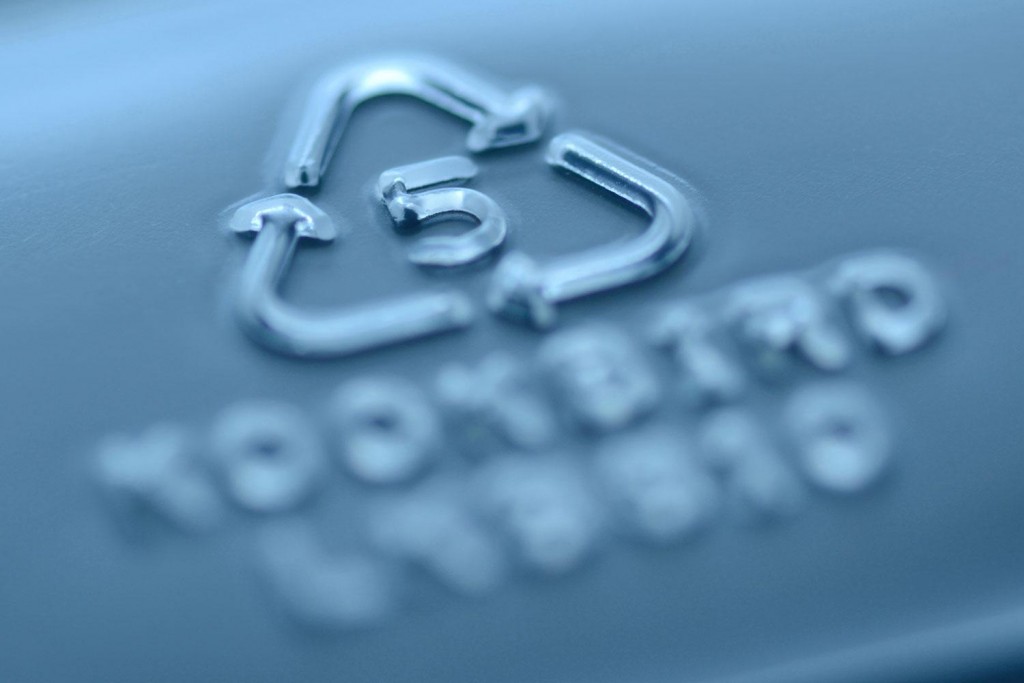
Number 5 inside the triangle is the safest. The are made up of PP (Polypropylene). You’ll find it in ice cream cups, straws, and syrup bottles.
Common usage: Yogurt containers, ketchup bottles, syrup bottles, and medicine bottles etc.
Recycling : Polypropylene is recycled into brooms, auto battery cases, bins, pallets, signal lights, ice scrapers, and bicycle racks.
Must read: 35 Body Language Signs That May Help You To Read Others Mind
Number 6 & Number 7 – Dangerous & Deadly, please avoid them.
Number 6 inside the triangle indicates dangerous whereas number 7 indicates deadly. It may sound a little exaggerated but read on to know why. Number 6 plastic are made of polystyrene. Polystyrene is Styrofoam, which is notorious for being difficult to recycle, and thus, bad for the environment. As for number 7, its plastic is made up of a mixture of polycarbonate and BISPHENOL-A (BPA). (All of the plastic resins that don’t fit into the other categories are placed in the number 7 category.)
Effects : They contain hormone disruptors such as BPA, which has been linked to infertility, hyperactivity, reproductive problems, and other health issues). Continuous usage of number 6 or 7 types might lead to cancer.
Common usage:
#6 – Plastic spoons, plastic forks, compact disc cases, egg cartons, meat trays, and disposable plates and cups, water bottles (mostly used by athletes).
#7 – Sunglasses, iPod cases, computer cases, nylon, 3- and 5-gallon water bottles, and bullet-proof materials.
Recycling :
#6 : Egg cartons, vents, foam packing, and insulation.
#7 : Most recycling programs would not accept it. This kind of plastic poses a huge health risk, leaching potentially toxic chemicals, especially when heated.
Now that you have known the meaning of symbols behind bottles, you might want to know if these are applicable to Tupperware too. What about indications of the number 7 behind Tupperware? Do they mean the same thing?
“Apparently they do. While the vast majority of Tupperware products are considered safe, some of its food storage containers use polycarbonate (plastic #7), which has been shown to leach the harmful hormone-disrupting chemical Bisphenol A (BPA) into food items after repeated uses.” ~ HOW SAFE IS TUPPERWARE?
To Sum Up: USE 2,4 and 5 & AVOID 3,6, and 7
You need not remember the name of the chemicals, but remembering the numbers inside the recycle triangles, however, is critical in order for you to avoid purchasing materials that do more harm than good to your body. To remember easily, always opt for symbols 2,4 and 5 when you are shopping for plastic materials.
a) Look for symbols 2, 4, and 5, as these plastics are considered to be safest. These are the plastics to look for in terms of human and animal consumption.
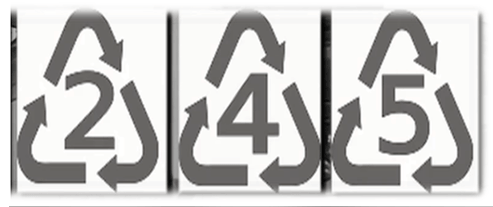
b) Avoid purchasing materials with symbols 3, 6, and 7. Although number 1 is considered to be safer than 3,6 or 7, experts still suggest to avoid using it.
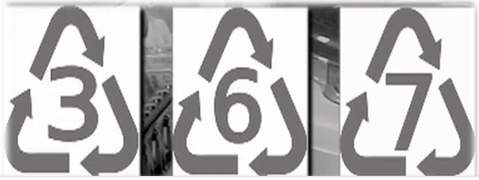
Must read: 50 Little-known, But Interesting Facts About The ‘HUMAN BODY’
Now that you have learnt about these symbols, pass on the knowledge to your friends by sharing this article. One good deed goes a long way- in this case, perhaps even generations!
Source – Quora
